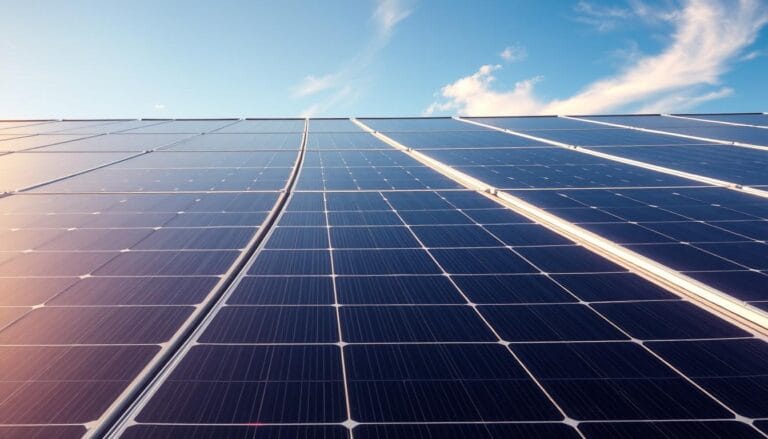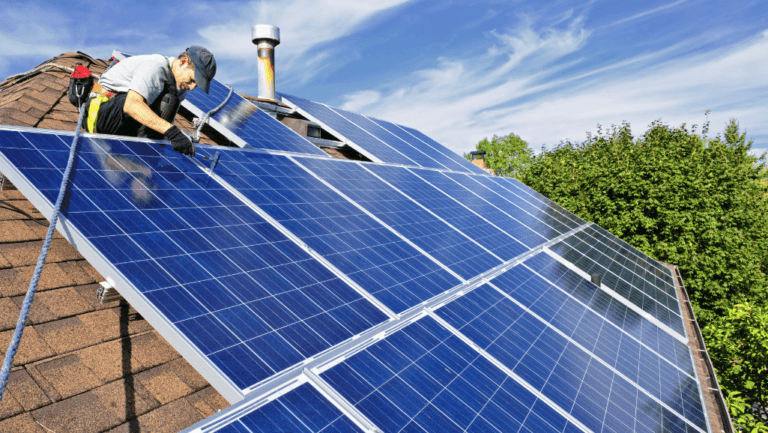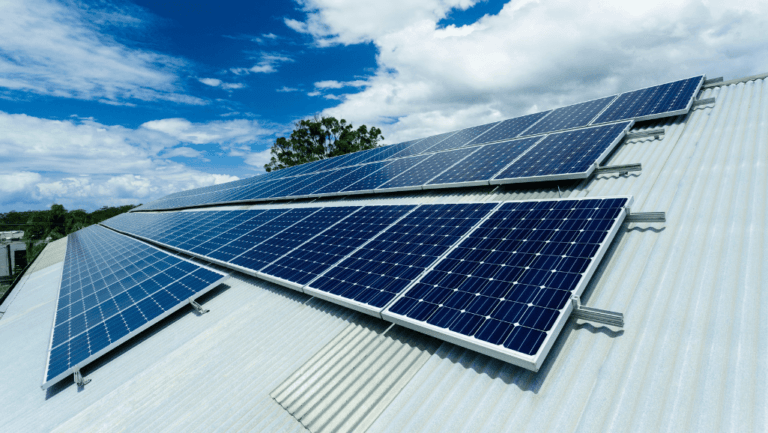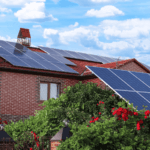Thinking about a system for your home starts with clear expectations: the average monthly payment for solar panels depends on state pricing, system size, and available incentives. Costs vary widely, and financing is a common path that spreads the upfront installation cost into steady installments homeowners can plan for.
Loans, leases, and cash purchases create different outcomes. Loans let you own the solar panel system, which usually lowers your electricity bill over time and preserves eligibility for tax credits. Leases and PPAs simplify up-front cost and often give predictable monthly bills, but the provider retains ownership and the federal tax credit goes to them.
Look at the big picture: the investment, local incentives, and energy security matter as much as the sticker price. Run reliable calculators (PVWatts, Project Sunroof), collect multiple quotes that show $/W and expected production, and compare terms and warranties. That approach protects your home, helps you estimate monthly bills versus utility costs, and builds real savings across the years you own the system.
Key Takeaways
- Benchmarks: Typical financed payments range from low triple digits for loans to lower fixed charges for leases — see the article’s examples for exact ranges.
- Ownership matters: buying (cash or loan) preserves the federal tax credit and long‑term savings; leases trade ownership for convenience.
- Translate $/W to budget: use the installer’s cost per watt and your required kW to estimate total cost, apply incentives, then calculate the financed principal.
- Ask for details: request itemized quotes that show cost per watt, expected annual production (kWh), warranties, and any escalators or fees.
- Quick example: a $20,000 financed balance at a competitive APR can be roughly $148/month over 15 years (example only — run your own numbers).
- Next step: Get at least three quotes and run PVWatts for your ZIP code before you decide.
Understanding “monthly payment” for a solar panel system
What you pay each month reflects ownership, term length, and the services bundled with your system. How you finance—cash, loan, lease, or PPA—changes the monthly cost profile and who claims incentives. Typical loan payments today often fall in the $100–$250 range; lease and PPA customers frequently see steady charges near $60–$150 per month on long (often 20‑year) terms, sometimes with annual escalators.
How loans, leases, and PPAs create different monthly costs
Loans let you own the solar panels and the solar panel system outright while spreading the installation cost across years. Ownership preserves eligibility for the federal tax credit and other incentives and usually increases lifetime savings. Example (illustrative): financing a $20,000 principal at 4% APR over 15 years is roughly $148/month.
Leases and PPAs keep ownership with a provider. You get predictable monthly bills, maintenance included in many contracts, and low or no upfront installation cost—but the provider claims tax credits. Watch for escalators (annual percentage increases) that compound over time and check transfer rules if you sell your home.
Quick comparison (one-line summary): Loan = ownership + tax credits + higher initial monthly payment potential; Lease/PPA = low upfront cost + predictable monthly payments + no tax credit for the homeowner.
What’s included in a payment vs. what still shows up on your electricity bill
Monthly payments can bundle equipment, permitting, labor, monitoring, and warranties into one charge. Your utility bill, however, often still includes fixed grid charges, delivery fees, taxes, and any net metering or production credits. When production falls short of consumption you’ll still buy power from the grid and pay the utility for that portion.
- Choose term wisely: longer loan terms reduce monthly payment but increase total interest paid.
- Size matters: right‑sizing the system to your energy use avoids over‑financing and improves year‑one savings.
- Read contracts: request an itemized monthly cost breakdown from installers showing what’s covered (equipment, monitoring, maintenance) and whether escalators or fees apply.
Average monthly payment for solar panels: quick benchmarks in the United States
What you pay each month ties directly to system size, installer rates, and incentives.
Typical ranges homeowners see today
Loans commonly result in payments of about $100–$250 per month, depending on your APR and term. Lease and PPA customers often pay steady charges near $60–$150 per month, with low or no upfront fees but possible annual escalators.
Installed costs vary widely by region. Many national datasets show per‑watt pricing in a range roughly $2.79–$4.22/W with a midpoint near $3.56/W; applied to system size, that converts to typical pre‑incentive totals. For example, a 6 kW system at $3.00/W is about $18,000 before incentives; an 11 kW install at higher local rates can approach $28,000 pre‑incentive.
Remember these are national benchmarks — state differences in labor, permitting, and market competition will move costs up or down. Apply incentives (like the federal tax credit) to reduce the financed amount and the monthly payment you actually face.
Why your payment might be lower or higher than the average
Several site‑level and market factors push your monthly solar payment above or below national benchmarks. Strong sun exposure (higher irradiance), competitive installer bids, and robust incentives meaningfully reduce the financed amount and lower your monthly cost. By contrast, higher per‑watt equipment prices, premium components, complex roof mounts, or choosing a shorter loan term will increase monthly payments and total interest paid.
- System size: larger arrays require more panels and raise the financed amount; size should match household energy needs to avoid over‑financing.
- State and area costs: local labor, permitting, and utility rules vary by state and can move installed costs by thousands of dollars.
- Equipment and soft costs: premium panels, microinverters, racking for ground mounts, and higher soft costs (permits, interconnection) increase up‑front price but can improve long‑term value.
Quick checklist for quote comparison: ensure each installer shows cost per watt ($/W), expected annual production (kWh/yr), warranties and degradation rate, permitting and interconnection fees, and any escalators or add‑ons.
Example: if shading or roof constraints force you to add 15% more capacity, a $18,000 project becomes roughly $20,700 — increasing your financed amount and monthly payment accordingly. Run PVWatts or Project Sunroof for a ZIP‑level production estimate to see how irradiance and shading affect the system size you actually need.
Action step: get a PVWatts estimate for your address and ask installers to use that production figure in their proposals so you can compare true value across quotes before you commit.
From system costs to monthly payments: translating price to a bill you can budget
Turn a quoted system price into a predictable bill by starting with per‑watt math and local incentives. Multiply the installer’s $/W by the kW you need to estimate total installed cost, subtract any qualifying incentives or tax credits, then use the financed principal, APR, and term to calculate a monthly payment.
Per‑watt pricing and typical totals
Per‑watt guides your estimate: many national datasets put per‑watt pricing roughly in the $2.79–$4.22/W range with a midpoint near $3.56/W. Multiply that $/W by the system size to find a pre‑incentive installed cost—for example, 6 kW × $3.00/W = $18,000 before incentives.
State variability and incentives
Installed costs vary by state and local area because labor, permitting, and market conditions change soft costs. Some states’ typical totals sit closer to $13,958 while higher‑cost states push averages above $21,000. Apply incentives—especially the federal tax credit—to reduce the out‑of‑pocket amount and lower the financed principal that determines your monthly payment.
Worked examples: $15k–$30k projects
- Example calculation (per‑watt to total): 5 kW × $3.00/W = $15,000 (pre‑incentive).
- Apply a 30% tax credit: $21,000 × 0.30 = $6,300 → financed principal ≈ $14,700.
- Monthly payment example (simple amortization snippet): financed principal $14,700 at 4% APR over 15 years ≈ $108/month (illustrative — use exact amortization to confirm).
How to convert price to a monthly payment (one‑line formula): monthly ≈ amortize(financed principal after credits, APR, term in years). Ask installers for the financed principal they recommend or run the numbers with your preferred lender’s APR and term.
Tip: include soft costs (permits, inspections, interconnection) and expected installation add‑ons when you compare quotes. Use the installer’s $/W, adjust for local soft costs, subtract incentives, then run an amortization to get a realistic monthly payment and savings estimate versus your current electricity bill.
Financing your solar installation: cash, solar loans, and lease/PPA options
Choosing how to finance a rooftop energy system shapes short-term cash flow and long-term value. The financing route you pick changes who owns the panels, who claims incentives, and how quickly you recover your investment through lower electricity bills or bill credits.
Cash purchase: no monthly obligation, maximum savings and ownership benefits
Paying cash means you own the solar panels and solar panel system outright from day one and remain eligible for the federal tax credit and most state or utility incentives. Because you avoid interest and finance fees, a cash purchase typically delivers the strongest lifetime savings and the fastest payback.
When to consider cash: you have available capital, want maximum return, and plan to stay in the home long enough to capture the value.
Solar loans: typical terms, rates, and sample payments
Solar loans let you own the panels while spreading the installation cost over 10–20 years. Loan terms and APRs determine monthly payments—shorter terms raise the monthly amount but reduce total interest; longer terms lower monthly cost but increase total interest paid.
Typical loan payment ranges often fall between $100 and $250 per month depending on financed principal, APR, and term. Example (illustrative): finance $20,000 at 4% APR for 15 years → about $148/month. If you apply a 30% tax credit first (owner purchase), the financed principal drops and the monthly payment falls accordingly—ask lenders how they handle the credit in loan docs.
Leases and PPAs: fixed charges, escalators, and ownership trade-offs
Leases and power purchase agreements (PPAs) shift ownership to a third party. You pay a predictable monthly lease charge or a per‑kWh rate for the power produced. These options often require little or no upfront installation cost and include maintenance, but the provider claims tax credits and incentives.
- Watch escalators: many contracts include an annual increase (the escalator) that compounds over the 15–25 year term—compare escalator size to local utility inflation.
- Compare guarantees: verify production guarantees, service response times, and whether monitoring is included.
- Resale and buyouts: leases can complicate home sales—review transfer rules and buyout terms if you might move.
Simple finance decision checklist: 1) Do you want ownership and tax credits? → cash or loan. 2) Is low upfront cost critical? → lease/PPA. 3) Can you tolerate escalators? 4) Check APR, term, fees, and whether installers apply federal tax credit before financing.
Next step: talk with your tax professional about the Residential Clean Energy Credit (federal tax credit) before finalizing financing, and ask lenders/installers to show an amortization example with and without applying the credit so you can compare monthly bills and lifetime savings.
How tax credits and incentives lower your monthly payment
Tax breaks, rebates, and performance incentives can shave thousands from your upfront cost and materially reduce the financed principal that determines your monthly payment.
The primary federal incentive is the Residential Clean Energy Credit (sometimes referred to historically as the ITC). Homeowners who own their solar panel system and meet eligibility requirements may claim a 30% credit on qualified installation costs for systems placed in service during the applicable program window—confirm current law and expiration dates before you act.
Federal timeline and eligibility
The Residential Clean Energy Credit provides a straight percentage reduction (30% in the recent program) of qualified costs for eligible homeowners. Eligibility generally requires ownership of the system and proper documentation from your installer—retain invoices, system specs, and proof of the installation date to claim the credit on your tax return. Because policy can change, verify the credit rate and deadlines for the tax year you plan to claim it.
State, local, and utility add-ons
Many states and utilities layer additional incentives that further cut the out‑of‑pocket amount. These may include upfront rebates, state tax credits (some programs offer fixed amounts up to a few thousand dollars), property tax exemptions, performance incentives such as SRECs, and favorable net metering rules that create recurring bill credits. Availability, amounts, and eligibility vary by state and utility.
Applying incentives to lower what you finance
Apply credits and rebates before you lock your loan if your lender and installer permit it so you finance a smaller principal and owe less each month. Ask installers to itemize incentives on quotes and to show both pre‑ and post‑credit financed principals. If your lender expects you to claim the tax credit on your tax return (rather than reducing loan principal at closing), model both cases to see the monthly impact.
- How to claim the credit — three steps: 1) Keep detailed invoices and installation paperwork; 2) file the appropriate tax form for the Residential Clean Energy Credit when you submit your return; 3) coordinate with your installer and tax advisor to confirm qualifying costs.
- Plan early: many incentives are time‑limited or budgeted, so begin planning before you sign a contract.
- Layer benefits: federal, state, and utility incentives often stack but check for caps or program interactions.
- Document everything: incentives depend on clear paperwork—save contracts, equipment lists, and interconnection approvals.
Numeric example: applying a 30% credit to a $20,000 install reduces the amount by $6,000, leaving $14,000 to finance. That lower principal typically cuts monthly payments and total interest owed—ask your lender for an amortization comparison that shows payments before and after credits.
Tip: consult your tax advisor to confirm eligibility and optimal timing for claiming credits before you finalize financing. Also check your state energy office or utility for local incentives that can further reduce upfront cost and recurring payments.
Key factors that move your monthly payment up or down
Your electricity needs and roof layout are the biggest levers over a homeowner’s recurring cost. Small changes in system design, equipment selection, or permitting can materially affect the financed amount and the time you spend repaying it.
Energy consumption and system size (kW)
Energy use and system size
Your household energy consumption determines the system size: higher demand requires more panels and increases the financed principal, which raises monthly payments unless incentives offset the cost. Right‑sizing the system to actual needs avoids over‑financing and improves year‑one savings versus your utility bill.
Equipment choices: monocrystalline panels, inverters, and add‑ons
Equipment and performance trade‑offs
Higher‑efficiency monocrystalline panels typically cost more per panel but generate more energy per square foot; premium panels, microinverters, energy storage, and monitoring hardware raise installation costs but can increase annual production and long‑term value. Evaluate incremental cost per watt against expected production gains and the system’s degradation rate to judge value.
Mounting, shading, and interconnection
Mounts, site conditions, and utility rules
Roof installs usually cost less than ground mounts, which need extra racking and trenching. Significant shading or an awkward roof layout can force additional capacity or smarter electronics, increasing equipment and installation costs. Interconnection, permitting, and inspections commonly add $500–$2,000 or more and extend project timelines; distance to the meter also increases wiring and conduit expenses.
Practical tip: ask installers for proposals that model realistic production against your state’s irradiance and local fees. That gives the clearest forecast of the system’s cost over the years and the financed amount you’ll carry.
- Size to match needs: size your array to your energy use to avoid over‑financing and wasted capacity.
- Balance premium equipment: weigh the extra $/W for premium panels or inverters against projected kWh gains and lifetime production.
- Budget for soft costs: include permitting, interconnection, and maintenance budgets (typical range $350–$800/year) in your financial model.
- Compare apples to apples: require proposals that show per‑watt ($/W) and total system costs alongside expected production (kWh/yr).
Residential vs. commercial solar: monthly payment dynamics
When installations scale up, per‑watt charges often fall because bulk equipment pricing and streamlined logistics reduce soft costs.
Commercial systems often secure lower per‑watt pricing—commonly in the $1.00–$2.50/W range for large builds—because fixed costs like permitting and design are spread across more capacity. Commercial totals frequently run $125,000–$500,000+; economies of scale reduce unit cost and can lower the recurring payment burden on a per‑kW basis.
Residential solar normally lands around $2.00–$3.00/W before incentives. Smaller residential projects face higher soft costs per watt, so competitive bids and careful quote comparisons matter more for homeowners looking to minimize installation costs and monthly payments.
Key differences and practical takeaways
- Economies of scale: larger systems spread fixed costs across capacity, reducing $/W and improving cash flow.
- Tax and depreciation: commercial buyers frequently access accelerated depreciation and additional incentives that change net costs.
- Site simplicity: commercial sites with uniform roofs or open ground reduce complexity compared to varied residential rooftops.
- Compare like with like: always match cost per watt, expected annual production, and contract terms when evaluating quotes.
For a deeper look at buyer behavior and financing patterns, see the payment behavior study and use those insights to choose the path that best matches your property’s needs and long‑term value goals.
Offsetting your electricity bill: ROI, payback, and monthly cash flow
Compare loan or lease costs directly to estimated energy savings to see whether you start in the red or the black.
Estimate returns by modeling how the system reduces your electricity bill against your finance or contract payments. Example case: many homeowners see a long‑term investment return near 10% and a payback period around 10 years in favorable markets—treat these as illustrative, not guaranteed.
Worked savings example: a 10 kW system that reduces utility charges by about $120/month provides roughly $1,440/year in bill savings; over 25 years, those avoided costs can total tens of thousands of dollars depending on utility rate inflation and system degradation.
Estimating savings vs. loan or lease costs
- Compare projected loan or lease payments to expected bill credits and net metering value to calculate year‑one net cash flow.
- Include the federal tax credit and local incentives to lower financed principal and improve early‑year savings.
- Ownership typically yields stronger lifetime savings than leasing because you retain tax credits and system equity.
How bill credits and rate inflation improve long‑term value
Net metering and production‑based credits convert excess generation into bill reductions that improve cash flow as utility rates rise. Modeling sunny and cloudy years, modest usage growth, and utility rate inflation shows how avoided electricity costs compound returns across the years.
Plan with confidence: calculators, quotes, and timeline
Start planning by running PVWatts and Project Sunroof to estimate how much energy your roof can realistically produce. Both tools provide monthly and annual production estimates and help model installed cost scenarios before and after a 30% credit.
Use PVWatts and Project Sunroof to set expectations
PVWatts estimates output, cost solar scenarios, and 25‑year savings; Project Sunroof maps usable roof area and sun exposure to suggest a practical system size based on real irradiance data.
Collect and compare three or more installer quotes
Ask each installer to show cost per watt ($/W), equipment specs, warranties, expected annual production (kWh/yr), and pre/post‑credit pricing. Align their production numbers with your electricity history and PVWatts output so you buy the right‑sized system.
- Validate calculator scenarios with a site assessment and final system design.
- Factor permitting and inspection delays and $500–$2,000 in extra costs into your plan.
- Compare financing offers: APR, term, fees, and any dealer adders or escalators.
Build a checklist to track quotes, permits, incentives, and milestones so your installation proceeds smoothly. Download the installer comparison checklist, run PVWatts for your address, and request amortization examples from lenders so you can compare projected monthly payments and lifetime value before you sign.
Conclusion
Smart design, honest quotes, and timely incentives turn an installation into long‑term value. Layer the federal tax credit with state and utility programs to shrink system costs and reduce the financed amount that determines your monthly payment.
Homeowners who purchase (cash or loan) keep the federal solar benefits and typically see stronger lifetime returns because they retain tax credits and system equity. Leases and PPAs suit people who prioritize low upfront hassle and predictable monthly bills, but those options usually transfer incentives to the provider and can complicate resale value.
Compare three or more detailed quotes, run reputable calculators, and pick a timeline that secures incentives. Learn more about typical costs and buyer choices at how much home solar panels cost. With a clear plan, a residential solar system can cut your electricity bill and produce meaningful savings for years.























